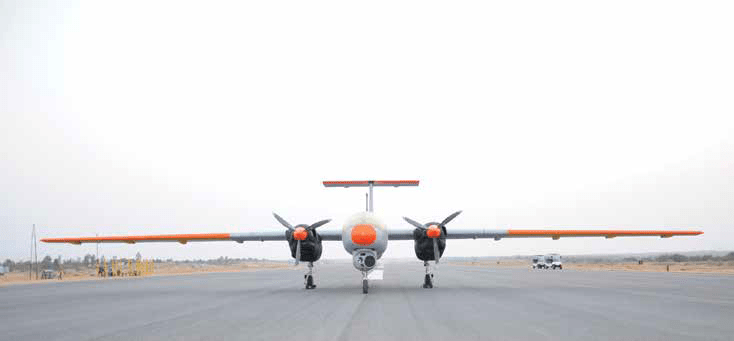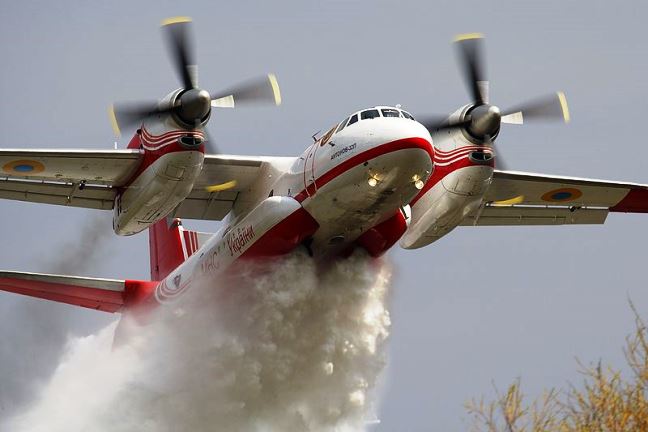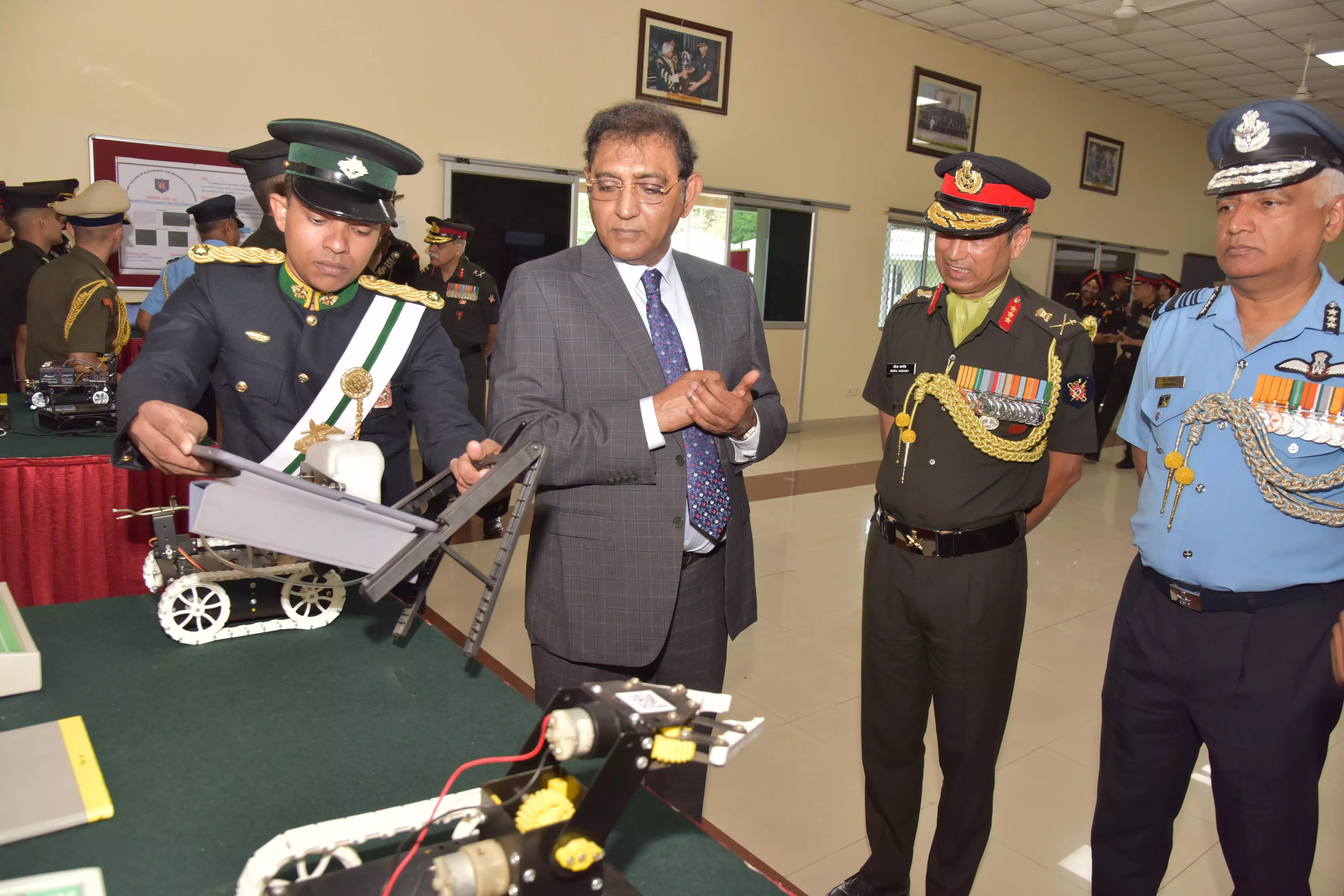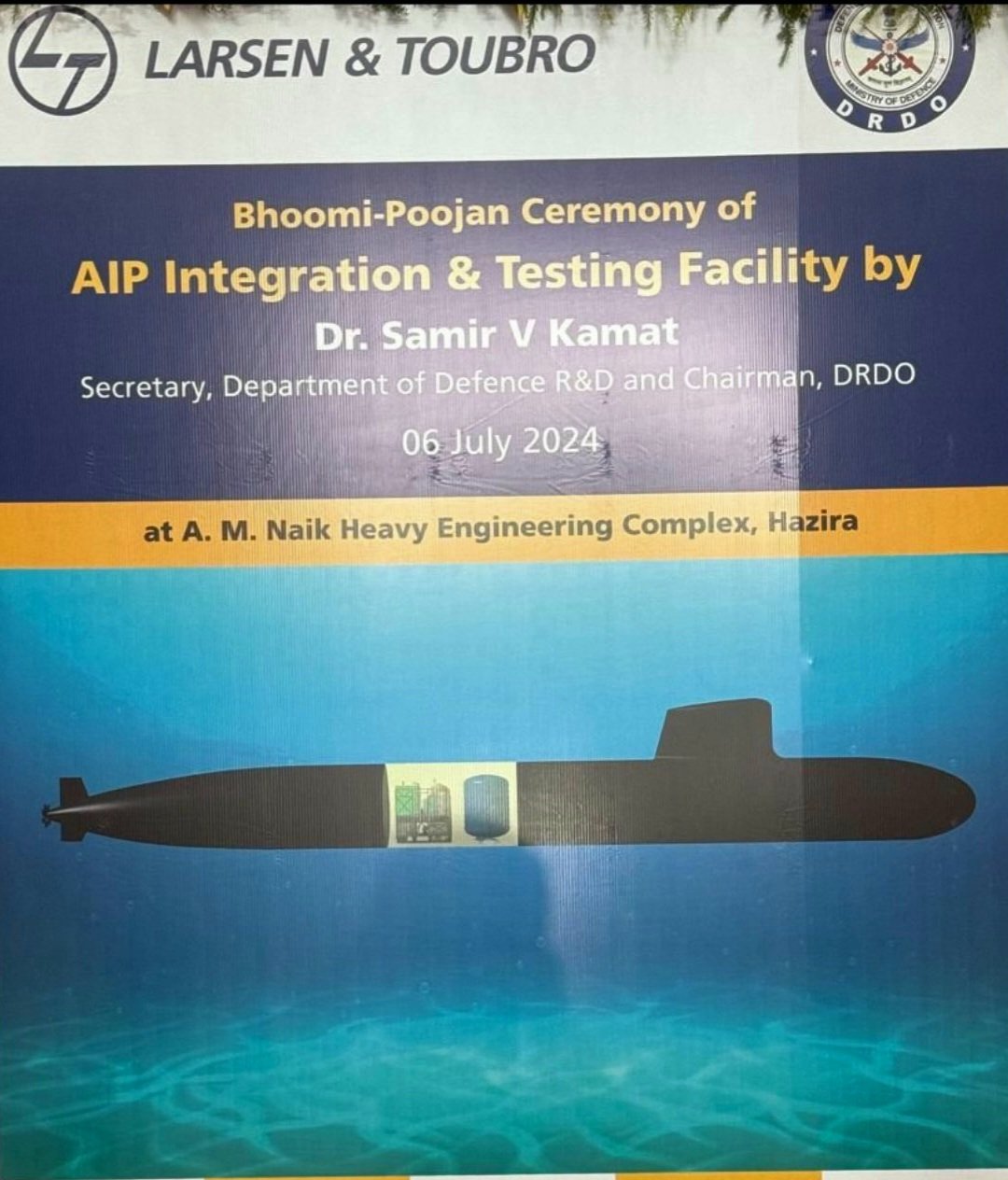SOURCE: AFI

The Indian Navy has marked its presence in the world’s largest international maritime exercise, RIMPAC 2024, with the arrival of its P-8I long-range patrol aircraft in Hawaii.
RIMPAC 2024 boasts an impressive assembly of 29 nations, showcasing combined maritime prowess with 40 surface ships, 3 submarines, and over 150 aircraft participating in the drills. This multinational exercise serves a crucial purpose in fostering cooperation and strengthening joint operational capabilities among the participating forces.
Continue readingSOURCE: AFI

India’s armed forces are seeking modifications to the Agnipath recruitment scheme, a program introduced two years ago that has faced criticism. Senior military officials, speaking on condition of anonymity, have proposed raising the upper age limit for Agnipath inductees from 21 to 23 years old. Additionally, they suggest retaining at least 50% of Agniveers (recruits under the scheme) after their initial four-year service period, compared to the current 25% retention rate.
The proposed changes aim to enhance the combat effectiveness of the armed forces. Officials believe that raising the age limit will allow for the recruitment of graduates who can be trained for technical roles, potentially improving overall operational capabilities.
Continue readingSOURCE: RAUNAK KUNDE / NEWS BEAT / IDRW.ORG

The Defence Research and Development Organisation (DRDO) has made significant progress on India’s indigenous Submarine-Launched Cruise Missile (SLCM). Following successful trials last year, DRDO reportedly conducted two more tests in the past 12 months, showcasing an improved range.
The latest iteration of the SLCM boasts a range of 500+ kilometers, allowing it to strike targets deep within the enemy territory or at sea. This extended range significantly enhances India’s offensive capabilities.
Continue readingSOURCE: RAUNAK KUNDE / NEWS BEAT / IDRW.ORG

The Indian Navy’s plan to acquire additional P-8I long-range maritime patrol aircraft (MPA) has been put on hold. Instead, the Navy has opted to procure nine new Medium Range Maritime Reconnaissance (MRMR) aircraft based on the Airbus C-295 transport platform.
These MRMR aircraft, developed by Airbus, will provide the Navy with enhanced capabilities for various missions including maritime surveillance, anti-submarine warfare, and maintaining maritime domain awareness. Additionally, they will be equipped with DRDO-developed Electronic Intelligence (ELINT), Communications Intelligence (COMINT), and special operations.
Continue readingSOURCE: RAUNAK KUNDE / NEWS BEAT / IDRW.ORG

The Indian Navy is set to receive a boost in its maritime surveillance capabilities with the indigenous Tapas MALE (Medium-Altitude Long-Endurance) UAV. According to reports, the Navy has decided to place an initial order for four units of the Tapas, developed by the Aeronautical Development Establishment (ADE) and manufactured by Hindustan Aeronautics Limited (HAL).
These Tapas UAVs will be maritime variants, equipped with navy-specific sensors and electronic warfare (EW) suites. This will enable them to perform critical tasks such as patrolling vast swathes of the Indian Ocean Region (IOR) and keeping a watchful eye on surface and subsurface activities.
Continue readingSOURCE: AFI

The 1971 Indo-Pak War cemented the Indian Air Force’s (IAF) dominance over its Pakistani counterpart. However, a post-war misconception emerged – the IAF’s nighttime effectiveness was attributed to a mythical Soviet Tu-126 AWACS (Airborne Warning and Control System) aircraft, codenamed “Moss.”
The Tu-126, nicknamed “Moss,” was a powerful tool, offering long-range, all-weather surveillance and command and control capabilities. With only 12 ever built, the idea that India leased one during the war to orchestrate nighttime strikes seemed plausible, especially considering the IAF’s success.
Continue readingSOURCE: AFI

With the Indian Air Force (IAF) planning to phase out its aging An-32 transport fleet, a compelling argument exists to repurpose at least a portion of these aircraft. Forest fires are a growing threat in India, and the An-32 platform offers a unique opportunity to address this challenge through conversion to the Antonov An-32P Firekiller.
Data from the Forest Survey of India paints a worrying picture. Over half (54.40%) of India’s forests face occasional fires, with a significant portion (7.49%) experiencing moderately frequent fires and another worrying section (2.40%) battling high fire incidence. These statistics highlight the urgent need for a robust firefighting strategy.
Continue readingSOURCE: AFI

The Indian Air Force (IAF) is taking a significant leap forward in aerial warfare capabilities with the integration of the domestically developed Astra Mk1 Beyond-Visual-Range Air-to-Air Missile (BVRAAM) onto its Su-30MKI fighter jets. This indigenous weapon system offers several advantages over the previously used R-77, bolstering the IAF’s offensive potential.
The Astra Mk1 boasts a unique “Buddy Launch Mode System” coupled with an autonomous guidance capability. This allows the missile to be launched even if the target isn’t locked onto by the firing aircraft. In such scenarios, a nearby friendly fighter can guide and update the missile’s trajectory towards the target, increasing its effectiveness.
Continue readingSOURCE: AFI

The 105th convocation ceremony at the Military College of Electronics and Mechanical Engineering (MCEME) on Saturday showcased India’s commitment to integrating cutting-edge technology into its armed forces. The event offered visitors a glimpse into several homegrown innovations designed to maximize the military’s operational capabilities.
Among the notable technologies on display were the virtual reality-based combat medical care (VR CMC), an augmented reality (AR)-based advanced mannequin system, an autonomous reconnaissance and battlefield surveillance drone, and a voice-controlled robot capable of offline operation.
Continue readingSOURCE: IDRW.ORG

State-owned Armoured Vehicles Nigam Limited (AVNL) is set to license produce the Russian KAMAZ-53949 Typhoon-K vehicle in India. Having successfully completed internal trials of the locally manufactured Typhoon-K, AVNL is now poised to offer this advanced military vehicle to the Indian Army.
The Typhoon-K motor vehicles are designed to provide integrated logistics support to combined arms and special units, including peacekeeping formations, in various environments. These vehicles are versatile, capable of carrying personnel and military cargo, and serve as a basic chassis for mounting various technical systems and weapons.
Continue readingSOURCE: IDRW.ORG

India has issued a Notice to Airmen (NOTAM) restricting airspace usage between July 17 and 26, 2024, sparking speculation about a possible missile test. The designated area encompasses both the ‘AD Launch Site’ in West Bengal and the APJ Abdul Kalam Island launch pad off the coast of Odisha.
This has led analysts to believe that the test might involve the AD-1 Interceptor missile, a crucial component of India’s Ballistic Missile Defence (BMD) Phase-II program. The inclusion of both launch sites in the NOTAM suggests the possibility of interceptor and target missile launches from separate locations.
Continue readingSOURCE: AFI

India’s ambitious space program is set to achieve a significant milestone with the unveiling of the latest design for the Bharatiya Antariksha Station (BAS). Building on the initial plans announced in 2019, the Indian Space Research Organisation (ISRO) has doubled the station’s mass and crew capacity, showcasing a leap in technological prowess and vision for human spaceflight.
The BAS now boasts an overall mass of 52 tons, significantly increased from the initially planned 25 tons. This robust design spans 27 meters in length and 20 meters in width, providing ample space for scientific experiments, habitation, and operations.
Continue readingSOURCE: AFI

In a significant event that underscores India’s strides in indigenous defense technology, the Bhoomi-Poojan ceremony for the Air Independent Propulsion (AIP) Integration and Testing Facility of Larsen & Toubro (L&T) was held with great enthusiasm. The ceremony was graced by the presence of distinguished dignitaries, including DRDO chief Dr. Samir V. Kamath, L&T Executive Vice President Arun Ramchandani, and other notable guests.
This facility is dedicated to the integration and testing of AIP systems indigenously developed by the Naval Materials Research Laboratory (NMRL) of DRDO, with L&T as the prime industry partner. This collaboration signifies a decade-long association between NMRL and L&T, working together to bring advanced defense technology to fruition.
Continue readingSOURCE: AFI

The Indian Navy is currently exploring the potential of the CAMCOPTER S-100 rotary unmanned aerial system (UAS) for Intelligence, Surveillance, and Reconnaissance (ISR) missions in the Indian Ocean Region (IOR).
The CAMCOPTER S-100 is a revolutionary UAS developed, designed, and produced by Schiebel, a renowned Austrian company founded in 1951. With a global presence spanning Vienna and Wiener Neustadt (Austria), Manassas (USA), Abu Dhabi (UAE), Shoalhaven (Australia), and Hyderabad (India), Schiebel has carved a niche for itself in the production of high-tech military, commercial, and humanitarian solutions.
Continue readingSOURCE: AFI

Bangalore-based CNC India, a leader in providing innovative design, fabrication, and integration solutions, has achieved a significant milestone by receiving the SAMAR Assessment Certification. This certification signifies CNC India’s strong association with India’s Space and Defence organizations, including ISRO (Indian Space Research Organisation) and DRDO (Defence Research and Development Organisation).
The SAMAR (Surface to Air Missile for Assured Retaliation) air defense system is a crucial component of India’s short-range air defense network. Inducted into the Indian Air Force in December 2023, SAMAR boasts the capability to intercept low-flying aerial threats like unmanned aerial vehicles (UAVs), loitering munitions, and attack helicopters within a range of 12 kilometers and at speeds exceeding Mach 2.5.
Continue reading